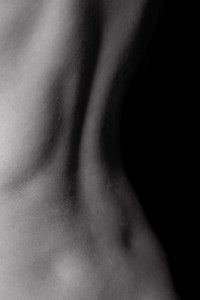Common Causes Of Back Pain
Low back pain affects 1/3 of us. Back pain isn’t normal. What can we do? Keep reading for common causes of back pain.
What’s osteopathy exactly?
Osteopathy includes treatment techniques that can vary from osteopath to osteopath.
Osteopathy is a safe form of physical therapy. The treatment goal is to optimise movement and restore mobility. This can help REDUCE PAIN intensity. Also, it’s to prevent further injury, which can be debilitating.
Is focus on POSTURE important? OUR dynamic posture is how we move; how we breathe; how we sleep.
What’s the result of physical therapy?
Did you know, in Britain, our BACK PAIN ranks as the leading cause of absence from work?
EVERY DAY 30,00 people in the UK see an OSTEOPATH.
As an osteopath we know there’s a huge difference between your first episode and subsequent episodes of low back pain.
That’s not all…
What’s the most common cause of back pain?
Just how much chronic back pain are GP surgeries seeing day in, day out? In most cases, commonly, the cause of back pain has been cited as muscle strains or sprains. These are best approached with initial treatment. Initial treatment includes physical therapy or osteopathy.
Sciatica
The diagnosis of sciatica and its management varies within and between countries. (1) The radiating leg pain and related disabilities make this condition highly impactful on quality of life. Exact data on the incidence and prevalence of sciatica is lacking. In general an estimated 5%-10% of patients with low back pain have sciatica. (2)

What is Osteopathy?
What is osteopathy?
There are four main principles of osteopathy:
- The Body is a Unit
- Structure governs function
- The body is capable of self-regulation, self-healing and health maintenance
- The Rule of the Artery is Supreme
SAFE, CLINICAL, PRACTICAL, EFFECTIVE
WHAT IS OSTEOPATHY? SAFE
In 2006, the Department of Health published guidelines entitled The Musculoskeletal Services Framework, to include osteopathy. Musculoskeletal back pain is the bulk of what registered osteopaths treat, on a day-to-day basis.
The osteopathic profession sees that initial screening takes place at first consultation. If necessary, appropriate referral (for further investigation) is made. Osteopathy at Susannah Makram Clinics is not for everybody. Also, not every is suitable for osteopathic treatment. Not every patient is suitable for all techniques of osteopathy. This relieves the burden on GPs vastly as osteopaths do not need referral in order be clinically safe.
The National Council for Osteopathic Research (NCOR) and the British Osteopathic Association have conducted a standardised data collection (SDC) exercise. The report is available on the NCOR website.
The Royal College of General Practitioners issued guidelines for GP’s, which recommends manipulation. This performed by osteopaths, for the relief of acute low back pain.
WHAT IS OSTEOPATHY? CLINICAL
The General Osteopathic Council defines osteopathy as: “…a primary care profession, focusing on the diagnosis, treatment, prevention and rehabilitation of musculoskeletal disorders, and the effects of these conditions on patients’ general health.”

osteopathy
Your osteopath assesses by medical history taking and physical examination. Orthopaedic physical exam at consultation assesses for muscle strength; nerve function etc.
Gait analysis looks for patterns of dysfunction. At Susannah Makram Clinics we also look for musculoskeletal function. Susannah focuses on dynamic movement – our posture. Finding our posture changes our life. We help optimise recovery and prevent injury.
Osteopathy (BSc Degree) is a four-year full-time programme.
Modules of study include: Principles of Osteopathy; Anatomy; Physiology; Osteopathic Technique; Soft-Tissue Techniques; Pathology; Nutrition; Diagnosis; Exercise Physiology, Orthopaedics and Traumatology; Psychology; Pathology; Paediatrics; among others.
The clinical teaching, standards and time requirements are the same as for the Masters in Osteopathy.
Functional healthcare relies on working with the best. That’s why Susannah Makram Clinics is established from years of experience. Do your research before you choose your specialist. Your health is your wealth. Invest wisely.
(1) Weinstein JN, Lurie JD, Olson PR, Bronner KK, Fisher ES. United States’ trends and regional variations in lumbar spine surgery: 1992-2003. Spine 2006;31:2707-14.
(2) Younes M, Bejia I, Aguir Z, Letaief M, Hassen-Zroer S, Touzi M, et al. Prevalence and risk factors of disc-related sciatica in an urban population in Tunisia. Joint Bone Spine 2006;73:538-42.
